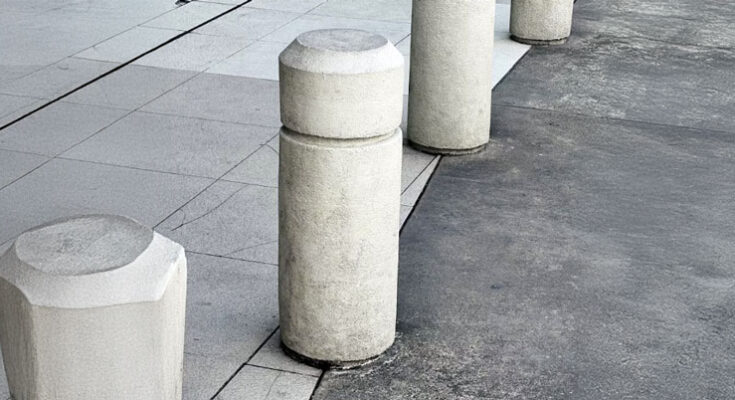Creating a long-lasting floor starts long before any coatings, tiles, or final finishes are applied. At the heart of floor durability lies surface preparation. This process ensures the substrate is structurally sound, free from contaminants, and has the right texture to bond with subsequent layers. For industrial, commercial, or even residential flooring, proper surface preparation can mean the difference between years of performance or early failure. Central to this process are machines designed to strip, grind, scarify, and polish surfaces. These tools, often overlooked in the broader discussion of flooring systems, play a decisive role in outcomes. Knowing how each type functions, when to use them, and the results they deliver helps to make informed decisions that impact long-term performance.
Grinding for Precision and Performance
Surface preparation starts with establishing a clean, even plane, and one of the most reliable methods to achieve that is grinding. At the core of this approach are machines known as concrete grinders, which function by using rotating discs embedded with abrasives to shave down the top layer of concrete. Whether preparing a warehouse floor for epoxy, removing old coatings, or creating a polished finish, these machines deliver the necessary texture and smoothness. In the middle of a renovation project, grinders can save considerable time by handling both removal and smoothing in one step. Their adaptability, available in both walk-behind and ride-on models, allows for use on jobs of all scales. Depending on the chosen grit, the same machine can remove thick adhesives or refine a surface to a near-polished sheen. Dust collection attachments further reduce airborne particles, making them a cleaner choice for indoor use. With their ability to handle diverse materials and surface states, grinders form a cornerstone of any serious surface preparation toolkit.
Shot Blasting for Profile and Cleanliness
Where grinding refines and levels, shot blasting tackles cleaning and profiling. This method involves forcefully propelling steel shot against the surface. As these particles impact the concrete, they fracture surface contaminants and leave behind a rough profile ideal for coatings or overlays. Shot blasting suits environments where minimal dust is non-negotiable. The process is almost self-contained; spent shot and debris are collected by the machine as it moves. It leaves behind a dry, profiled surface without the need for water or harsh chemicals. Construction crews often favor this technique, offered by concrete drilling services, when preparing surfaces for heavy-duty coatings or overlays, as the texture it creates promotes stronger adhesion. It’s also a good choice when speed matters, as it covers large areas quickly. Because it doesn’t rely on water or chemical cleaning agents, it aligns well with sustainable practices, especially in enclosed or sensitive environments like food processing plants or hospitals.
Scarifying for Heavy-Duty Removal
Some surfaces resist refinement or gentle cleaning and require forceful removal. This is where scarifiers come into play. Also known as milling machines or surface planers, scarifiers operate by rotating a drum lined with tungsten carbide or steel cutters. As this drum turns, it chips away at the concrete surface, breaking through thick coatings, high spots, or uneven sections. Their mechanical action is unmatched for aggressive surface removal. Scarifiers leave a deeper profile than grinders or blasters, which makes them ideal when the goal is to remove several millimeters of material quickly. Contractors often reach for these machines when faced with uneven joints, thick layers of epoxy or mastics, or coatings that have chemically bonded with the surface. Scarifiers offer various cutting depths and widths, allowing teams to match the tool with the surface area and level of removal needed. While the finish they leave is more textured, that deeper profile can benefit heavy-duty coatings or patching layers needing a firm grip.
Scraping Machines for Flexible Removal
For tasks that don’t require grinding or chipping but still involve removal, floor scrapers become the machine of choice. These tools remove resilient flooring, tile mastics, adhesives, or soft coatings. Using a flat blade, scrapers work by sliding under the material and lifting it from the surface. Unlike scarifiers or grinders, scrapers do not alter the concrete beneath but instead focus on separating the unwanted layer. This makes them ideal for projects where the base layer must be preserved intact. Many models offer variable blade sizes and angle adjustments, allowing for efficient removal across large expanses or tight corners. Electric and propane-powered versions meet various job site demands, and ride-on options increase speed on expansive projects.
Polishing for Aesthetic and Longevity
Once the surface has been cleaned, leveled, or stripped, some projects take a step further by polishing the concrete. Polishing machines use progressively finer grits to achieve a glossy, hard-wearing finish without coatings or sealants. This mechanical refinement brings out the natural stone character of the concrete while sealing pores through densification. The result is a surface that resists stains, water, and wear, ideal for both aesthetics and functionality. Polished concrete suits retail, commercial, and even high-end residential settings where long-term maintenance costs and appearance matter. These machines, similar in design to grinders, use diamond-embedded pads and often include water delivery systems to minimize dust and cool the surface. The final result depends on the number of grit levels used and whether the process includes dyes, stains, or densifiers.
Choosing the Right Machine for the Job
Selecting the appropriate surface preparation machine requires understanding the condition of the concrete and the project goals. A slab with minor imperfections and light coatings might only need a pass with a grinder. By contrast, a floor covered in thick epoxy, with high spots or embedded adhesives, may call for a combination of scraping, scarifying, and grinding. The size of the area also influences machine choice. Smaller spaces benefit from portable, lightweight models, while larger installations demand ride-on or walk-behind machines with broader coverage. Environmental concerns, such as indoor air quality or noise restrictions, can narrow down choices further. Machines with integrated dust collection or electric power sources perform better in enclosed spaces. Matching machine capability to surface condition ensures efficient preparation, better coating adhesion, and fewer issues post-installation.
A successful concrete floor begins with proper preparation, and that preparation depends on the right tools. Whether the job calls for smoothing, profiling, stripping, or polishing, the choice of surface preparation machines has a direct impact on both short-term results and long-term durability. Durable floors are not just about materials and finishes; they begin at the surface level, shaped and refined by machines designed for precision and purpose.











